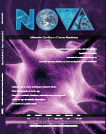Objective: To determine the frequency of Candida species isolates from oral cavities of diabetic patients and to evaluate sensitivity to antimycotic drugs. Material and Methods: Oral cavity samples were collected from patients included in this study after accepting the informed consent. The samples were cultured in Sabouraud Dextrose Agar and in Chromogenic Candida Agar. Api 20 C AUX and growth at 45º C in Sabouraud Dextrose Agar were used to identify Candidaspecies and ATB fungus test was used to evaluate the sensitivity to Fluconazole, Voriconazole and Itraconazole. Results: 200 samples were obtained from the oral cavity of diabetic patients. 96 Candida isolates were obtained: C. albicans (95.4%), C. guillermondii (2.3%)and C. parapsilosis (2.3%). Antimycotic assays revealed the following sensitivity: 97% against Fluconazol 97% and 93% against Voriconazol andItraconazol.Conclusions: C.albicanswas the most isolated species in diabetic patients. Taking into account that these patients are susceptible to acquire infections to different Candida species, it is important to identify which is the infecting species and determine its sensitivity profile.
keywords:
Candida sp, Diabetics, oral cavity.









